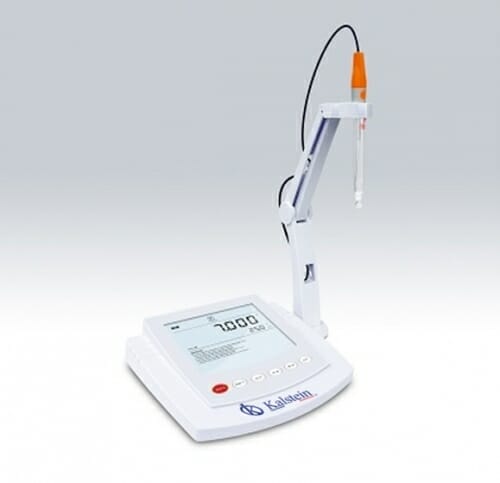pH meters are an essential tool in the laboratory, used to measure the level of acidity and basicity of a solution, which is important for performing a variety of scientific experiments. In order for the results to be accurate, it is necessary to calibrate the pH meter on a regular basis to ensure that it is working properly.
Although calibrating a pH meter can be a daunting task for beginners, the process is simple if the correct procedure is followed. Calibration begins with choosing the right equipment.
To calibrate a pH meter, an acid buffer and a basic buffer are needed to perform the calibration
The acid buffer is used to calibrate the meter at low levels, while the basic buffer is used to calibrate the meter at high levels, these buffers must be clearly labeled to indicate their pH value; once you have the buffers, the pH meter must be prepared.
This involves cleaning the electrode with acid buffer solution to remove traces of dirt, then rinsing it with deionized water, rinsing with distilled water is also a good option because it helps prevent contamination with improper ions, once the electrode is clean and has been rinsed, it is time to begin calibration.
Process that must be performed to perform the ph meter calibration correctly
The next step is to dip the meter electrode into the acid buffer, the meter should be turned off during this process; once it has been dipped, the meter should be turned on to allow the device to adjust to the pH value of the suspension; it is important to make sure that the meter is displaying correctly before adjusting the calibration.
Once the meter is displaying the correct number for the acid buffer, the calibration can be adjusted to make the device more accurate; after calibrating the meter with the acid buffer, the basic buffer can be used to calibrate the meter at the high levels, this process is similar to calibrating the meter with the acid buffer.
Users should adjust the meter to ensure the results of the investigations
On the other hand; the electrode of the meter should be left immersed in the basic buffer, turn on the device and make sure that the correct value is displayed, once this is verified, the meter should be adjusted to ensure accurate results; upon completion of these steps, the pH meter is ready for use.
It is important to remember that the equipment should be calibrated regularly to ensure accurate results, calibration should also be performed each time the meter is used for different measurements, as this ensures that the device is not affected by the acidity or alkalinity of a solution, which is essential for accurate measurement.
In laboratories, calibration of a pH meter is an important step to ensure accurate measurement in investigations
In conclusion; incorrect use of this device can have negative results on the scientific experiment, so it is necessary to follow the proper procedure to successfully calibrate the meter.
Although the calibration process can be intimidating for beginners, the steps listed will help and provide a clear understanding on how to add accuracy to your next experiment.
Where can the specialists purchase very good quality, low cost ph meters for their laboratories
At Kalstein as a Manufacturer company you will be able to purchase the best ph meters, just visit our website HERE
To obtain sophisticated and first quality equipment in relation to ph meters just click on the following link and select the one that fits your needs HERE

